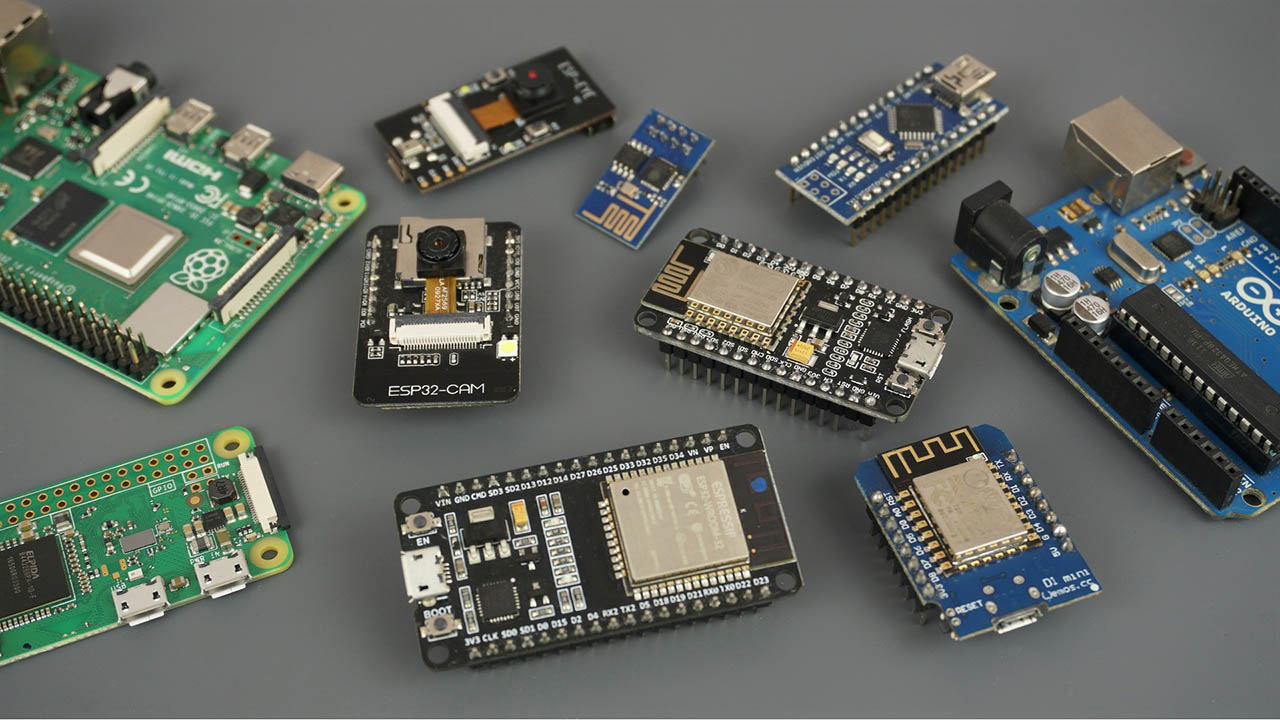https://randomnerdtutorials.com/esp32-esp8266-micropython-web-server/
必要とされるknow how が凝縮されている気がします。ブラウザーからESP32 ESPDuino-32上のBlue LEDのON/OFFを、リモートで行うMicroPythonのスクリプトになります。
スクリプトをスクラッチから書くのは、経験とスキルが必要です。でも他の方が書かれたスクリプトが読める様になれば、自分なりのカスタマイズが可能です。
その情報量(コンピューターサイエンスの領域)は、圧倒的に英語の文献が多いのです。![]()
英語を学ぼうとする私のモチベーションは、そこに在ります。
boot.pyに記述されたスクリプトは、
・WiFiでのTCP/IPコネクションとGPIOの初期化を行っています。SSID、PASSWORDは個人の環境に依存します。
# https://randomnerdtutorials.com/esp32-esp8266-micropython-web-server/
# Complete project details at https://RandomNerdTutorials.com
SSID = "SSID"
PASSWORD = "PASSWORD"
try:
import usocket as socket
except:
import socket
from machine import Pin
import network
import esp
esp.osdebug(None)
import gc
gc.collect()
station = network.WLAN(network.STA_IF)
station.active(True)
station.connect(SSID, PASSWORD)
while station.isconnected() == False:
pass
print('Connection successful')
print(station.ifconfig())
########################################################################
led = Pin(2, Pin.OUT)
以上が、boot.pyになります。
main()は、
# https://randomnerdtutorials.com/esp32-esp8266-micropython-web-server/
# Complete project details at https://RandomNerdTutorials.com
# HTTP Server main.py
PORT = '80'
def web_page():
if led.value() == 1:
gpio_state="ON"
else:
gpio_state="OFF"
html = """<html><head> <title>ESP32 ESPDuino-32 Web Server</title> <meta name="viewport" content="width=device-width, initial-scale=1">
<link rel="icon" href="data:,"> <style>html{font-family: Helvetica; display:inline-block; margin: 0px auto; text-align: center;}
h1{color: #0F3376; padding: 2vh;}p{font-size: 1.5rem;}.button{display: inline-block; background-color: #e7bd3b; border: none;
border-radius: 4px; color: white; padding: 16px 40px; text-decoration: none; font-size: 30px; margin: 2px; cursor: pointer;}
.button2{background-color: #4286f4;}</style></head><body> <h1>ESP32 ESPDuino-32 Web Server</h1>
<p>GPIO2 state: <strong>""" + gpio_state + """</strong></p><p><a href="/?led=on"><button class="button">ON</button></a></p>
<p><a href="/?led=off"><button class="button button2">OFF</button></a></p></body></html>"""
return html
def main():
s = socket.socket(socket.AF_INET, socket.SOCK_STREAM)
s.bind(('', PORT))
s.listen(5)
print('Type CTRL-C, to escape')
while True:
conn, addr = s.accept()
print('Got a connection from %s' % str(addr))
request = conn.recv(1024)
request = str(request)
print('Content = %s' % request)
led_on = request.find('/?led=on')
led_off = request.find('/?led=off')
if led_on == 6:
print('LED ON')
led.value(1)
if led_off == 6:
print('LED OFF')
led.value(0)
response = web_page()
conn.send('HTTP/1.1 200 OK
')
conn.send('Content-Type: text/html
')
conn.send('Connection: close
')
conn.sendall(response)
conn.close()
main()
となります。uPyCraftのIDEでmain()/main.pyをLoadRunするとまずboot.pyが実行される?様ですが、先ずはboot.pyをLoadRunして次にmain.pyをLoadRunして下さい。
Tips:main.pyのLoadRunを繰り返すと、
Ready to download this file,please wait!
...............
download ok
exec(open('main.py').read(),globals())
Traceback (most recent call last):
File "<stdin>", line 1, in <module>
File "<string>", line 51, in <module>
File "<string>", line 25, in main
OSError: [Errno 98] EADDRINUSE
>>>
の様なエラーメッセージが表示されます。その際のwork aroundとしては、PORT の指定を変えてみて下さい。
8080 ⇔ 80
http://192.168.xx.xx:8080 ⇔ http://192.168.xx.xx
main.pyを読み込むと、かなり応用が効きそうです。
最近契約した楽天モバイル![]() Rakuten MiniのWi-Fiからからアクセスしている様子です。
Rakuten MiniのWi-Fiからからアクセスしている様子です。
前回群馬に帰省した時に持っていって電波の強度(電界強度)を確認したのですが、バリバリでした。モバイル・ルーター代わりに使おうと思っています。![]()
おまけ
【参考記事】
https://randomnerdtutorials.com/




